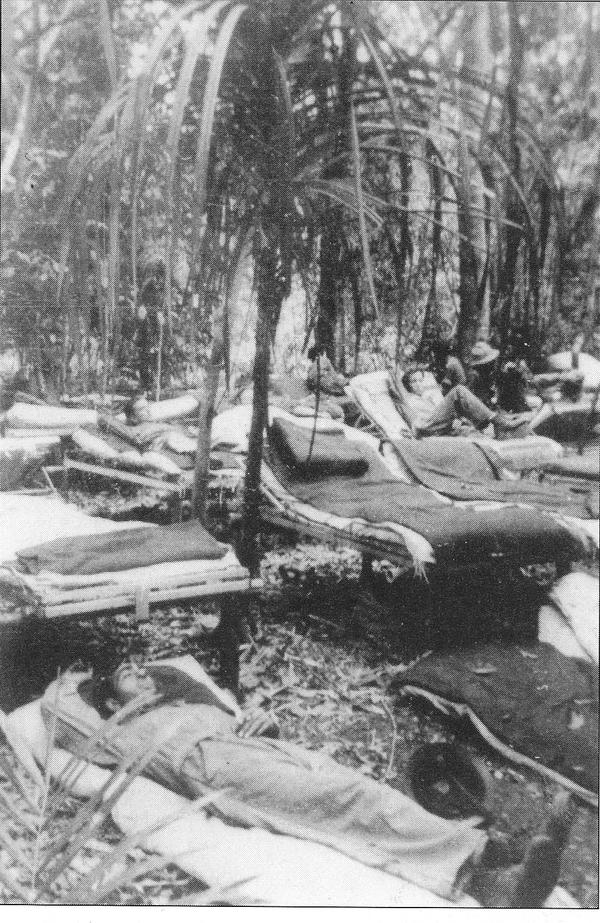April 7, 2023 Hello , April 9, 1942, is not a date American kids learn in history class, though it is close on the heels of "the date that will live in infamy" on which Japan attacked Pearl Harbor. Just three months after that
infamous attack, US Army General Jonathan Wainwright surrendered the Bataan Peninsula, Philippines, to the Japanese. In American war annals Bataan goes down as a horrendous defeat. Long time subscribers of this newsletter are very familiar with that story, but I tell a slice of it here again in memory of the courage, endurance and sacrifice of
the women and men who survived Bataan, and the one-in-three who did not. Here's the story through the eyes of Army Nurses, Ethel Thor and Sally Blaine.
April 9, 1942 though Women's Eyes
US Army Nurse Ethel Thor from Tacoma, Washington was one of ninety-nine US army and navy nurses who became the first-ever significant-sized group of American women sent into combat. They were armed only with their
nursing skills.
Army Nurse Ethel Thor assisting in surgery, Hospital #1, Bataan, Philippines, January 1942. Photo courtesy Getty Images.
When American retreated from Manila where Ethel was stationed, she was sent to a hastily organized field hospital on the Bataan Peninsula. Here's part of a letter
she wrote her family back in Washington State in February when the hospital was overwhelmed with patients and Americans had begun to ration food for soldiers, nurses and paitents alike. Hello folks, Just a line to let you know everything's OK. Two meals a day but we usually manage to get a few snacks between meals. The two things I miss are good coffee and rolls (that’s in the line of food). [This is] just like a camping trip—dirt, bugs and everything else that goes with it. Do my own washing and still manage to get a bath every day. Love, Ethel After surviving the battles of Bataan and Corregidor and three years in prison camp, Ethel never talked much about her wartime experience. She would say the men captured after the surrender of Bataan suffered far more than she did and there was little more to say. American Army Nurses bathing in a creek behind burlap privacy screen. Photo courtesy Getty Images.
Nurse Sally
Blaine from Bible Grove, Missouri, tended patients in Army Hospital #1 on Bataan. In an interview later in life, she described what she remembered. During bombing raids… I’d get in a tent. It didn’t offer any protection, but I didn’t want patients to see me being afraid. How can you show fear in front of your patients? That causes hysteria. I saw a ward become hysterical."
Sally caught malaria, but continued to supervise her ward from a cot.
The last day [before the surrender] I admitted 200 patients and put them on the ground. When I say admitted, I mean a sheet of paper with his name on it. They didn’t get blankets because we didn’t’ have any. Ward at Hospital #1, Bataan Peninsula, Philippines, March, 1942.
All American women serving on Bataan evacuated to nearby Corregidor Island the night before the army surrendered.
But things were bleak on the island, too, where nurses worked in an underground hospital tunnel. As the Japanese
barrage of bombs worsened and another surrender seemed inevitable, the army tried to evacuate the American nurses on a submarine and pontoon planes. There was only room for some thirty of the women, and Sally Blaine, one of the sickest, suffering continuing bouts of malaria, was chosen to go. Lieutenant Sally Blaine after the war.
And here might be the cruelest twist in Sally's story. She was on her way home, rescued mere days before the surrender of Corregidor, and capture of the remaining 54 army nurses. The two small planes carrying 20 nurses landed on Mindanao Island for refueling, last stop before Australia. One plane took off again, but Sally's seaplane was damaged on take-off, stranding the passengers on an island Japanese forces invaded that very
morning. Within weeks, Sally and the other nurses were seized and eventually sent to the prison camp in Manila where they joined their
comrades from Corregidor. Three long years later, Santo Tomas Prison Camp was liberated by US forces and all the nurses survived to come home. I
wrote Pure Grit because I wished that I had learned about these nurses when I was a girl growing up. They're incredible role models.
Like my article today? Please share:
Sources https://www.marycronkfarrell.net/pure-grit.html
I'll be taking a few weeks off due to a repetitive motion soreness in my right arm. It's not an injury yet, so hopefully a few weeks rest away from the computer, and I'll be
back. Not that I won't be working! One project I hope to complete is contacting sources of all the photographs published in Pure Grit to see about renewing permissions. If all goes well, Abrams may issue a reprint edition of the book. Right now, the only copies are available in my
closet! Which I'm happy to sell as long as they last Let me know if you'd like to purchase a copy.
Watch for my next newsletter in May!
Follow me on social media
Read a great book? Have a burning question? Let me know. If you know someone who might enjoy
my newsletter or books, please forward this e-mail. I will never spam you or sell your email address, you can unsubscribe anytime at the link below. To find out more about my books, how I help students, teachers, librarians and writers visit my website at www.MaryCronkFarrell.com. Contact me at
MaryCronkFarrell@gmail.com. Click here to subscribe to this newsletter. |
|
|





